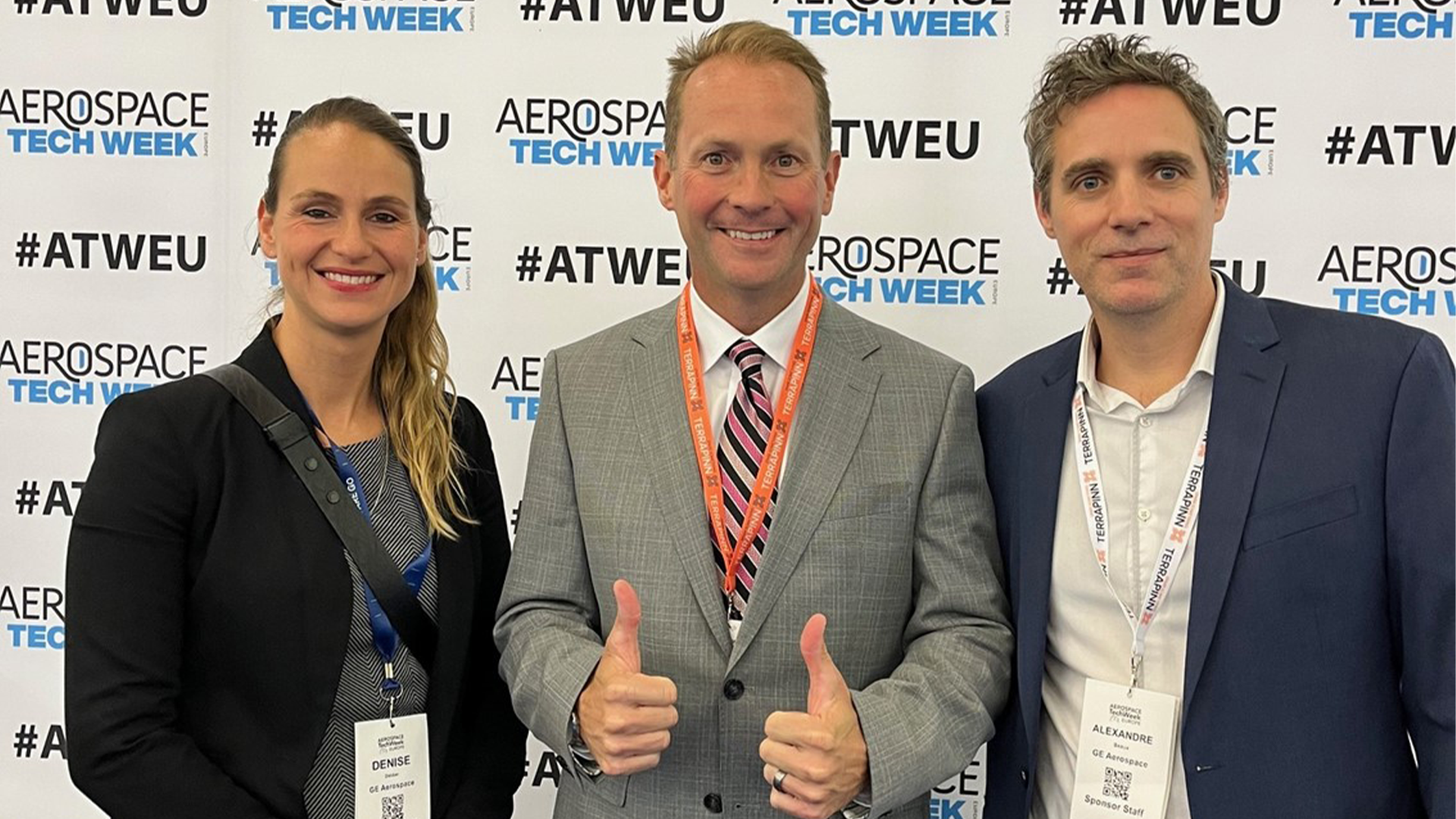All Systems Go! FlightPulse Unlocks the Power of Data and Analytics for Airline Pilots
May 16, 2024 | by Chris Norris
Ten years ago, the operators of a commercial jetliner — that complex, 750,000-pound intersection of force, mass, drag, vectors, and a thousand other streams of data — still relied on pieces of paper to remain in the air and on time. Forms, reports, and logs were filed, were retained for preview, and caused frequent points of friction. “We’ve all sat on a delayed plane and seen a guy come in wearing a vest and carrying a clipboard,” says Andrew Coleman, general manager for GE Aerospace’s Software as a Service division. “And the captain has to literally sign off on a log page before he’d be allowed to take off.” Back then, Coleman’s interest in the archaic procedure was little more than the annoyance of a frequent flier. Today, revolutionizing the industry’s use of data is his professional calling and that of the software team he oversees.
GE Aerospace is leading a transformation in how the industry uses “big data,” much of it through increasingly widespread adoption of technology like FlightPulse, an app that provides an immersive, high-resolution view of nearly every detail within a pilot’s control. In the seven years it’s been in use, this software has already brought significant improvements in both fuel consumption and safety to the increasing number of airlines currently using it, including, most recently, Air India and Delta.
“Ten years ago, most airlines saw data as a liability, something they had to pay to store,” says Coleman. “Today, I’d say airlines see data as one of their biggest assets, almost as significant as their people.” Much of this change in perception has to do with the team’s efforts and with the large-scale effects of the constant micro-adjustments that software platforms like FlightPulse can help airlines make on every flight.
Built in partnership with Apple, the app lives on a pilot’s Electronic Flight Bag (EFB), the electronic tablet that replaced the 40-pound flight bag pilots used to carry. By accessing and consolidating data over a wide array of parameters, FlightPulse enables each pilot to make better decisions around fuel and risk, improving their individual performance from flight to flight. In optimizing performance, it taps into a set of personal attributes that most pilots already share.
“They’re very driven, very focused, very serious about their profession,” Coleman says. FlightPulse taps into these qualities by gathering and presenting data in a way that drives optimal behavior — like a smart fitness watch, only instead of counting steps, it aggregates millions of data points from nearly everything within a pilot’s sphere of operations. “We synthesize the ones that really matter,” Coleman explains. “Data from the airplane, from the runway, from weather, air traffic control — and instead of a grainy snapshot, we provide pilots with a vivid HD movie of the entire flight.”

Today FlightPulse is used by 10% of commercial pilots globally, though Coleman expects new partnerships to quickly double this figure. This is partly because, in addition to saving airlines money and time while also helping them to reduce emissions, this software meets pilots where they live. “Instead of the information flowing down, it goes right into the hands of the person the information is about,” says Coleman. “They can now see how they did in their flight as quickly as they could look at their watch to see how many steps they took, rather than changing their behavior because someone called and told them to do x instead of y.”
Despite his commanding knowledge of the science and personalities involved in aircraft flight, Coleman was “kind of an outsider” when he arrived at GE Aerospace. “Most people here get their pilot’s license at, like, 13 years old,” he says, “whereas my background was in data and analytics.” Though raised in the Wright brothers’ home base of Dayton, Ohio, Coleman gravitated to the tech industry, where he spent 20 years overseeing the acquisition and management of data.
In 2015 he attended a conference where GE’s then CEO, Jeff Immelt, described the company’s mission to embrace its data as well as its hardware. He left impressed and, not long after, got a phone call asking if he’d like to help them achieve that mission.
“Prior to GE, I did not appreciate the depth of knowledge you need to understand how an airplane works,” he says. “But I’ll never forget, [then GE Aviation CEO] David Joyce told me, ‘We’ve got 40,000 people here that know the aviation industry. Helping us with the software and analytics side will help you get the industry side.”
“Eight years later,” adds Coleman, “I [realized] this is my calling in life. In this industry, our Software as a Service team — and I promise I’m not using hyperbole here — it’s the best team I’ve ever been on in any aspect of my life: sports, work, charity, anything. And I’m really proud of, every flight, knowing we had a small hand in making the world safer, a little more reliable, and a little more sustainable.”
“Our Software as a Service team is at the forefront of a digital transformation that is transforming and will transform flight operations in truly profound ways,” Coleman says. “We’re putting flight data to work for pilots and airlines that in turn is helping them improve the way they run their operations and serve their customers.”
Coleman looks forward to more dramatic changes as he and his team find new ways to increase and leverage the data each flight generates. “I would like to widen the aperture to get more attributes off of the flight data recorder,” he says. “I also believe in the power of artificial intelligence, which will help us glean a whole lot more insights than we have historically.”
And when it comes to gathering more insights, the possibilities seem almost limitless. Right now, he notes, “we’ve got an aggregate of 55,000 years of flight data under management.” Software like FlightPulse turns thousands of individual flight records, which would generate between 5,000 and 30,000 pieces of paper a year per aircraft, into a searchable database of flight records, as well as a high-fidelity aggregate that reveals patterns, inefficiencies, and potential improvements across the flight spectrum.
They don’t call it big data for nothing, and Coleman realizes that some of his more hardware-focused colleagues are still coming to grips with its latent power. “My dad’s a mechanical engineer,” he says. “And I’ll never forget that day I got hired by GE Aerospace. I told him and he was like, ‘Sorry, I don’t mean to offend you, but why in the world would they hire you? You’re not a mechanical engineer.’” He laughs. “Thanks, Dad.”




